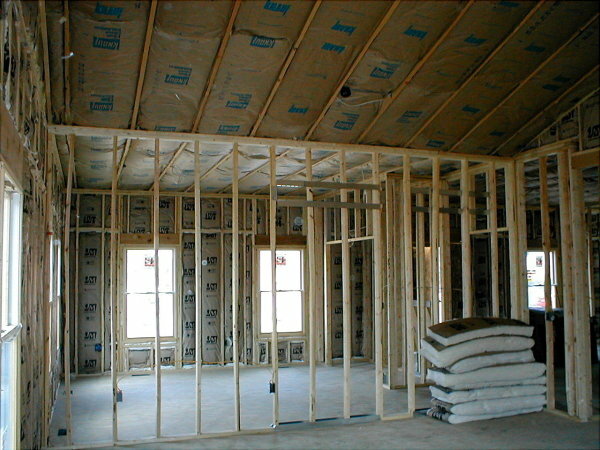Liquid shackles // Epoxy adhesive: application, existing species and their distinctive features
Table of contents
- 1 A little history
- 2 Areas of operation
-
3 Structure
- 3.1 hardeners
- 3.2 solvents
- 3.3 fillers
- 3.4 plasticizers
-
4 Advantages and disadvantages
- 4.1 positive
- 4.2 negative
-
5 existing varieties
- 5.1 In composition,
- 5.2 consistency
- 6 Overview of the most popular representatives
- 7 conclusion
Epoxy adhesive can rightly be called "liquid fetters." He perfectly copes with reliable and durable connection of virtually any solid material objects. But let us all in order.
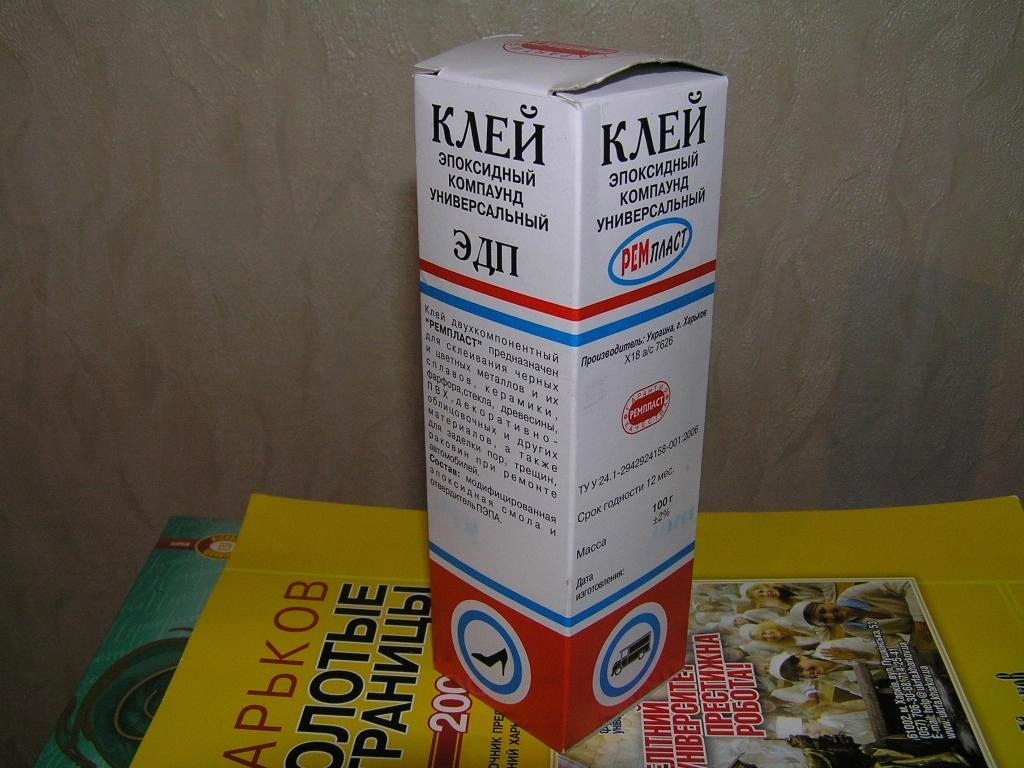
Photo package epoxy adhesive
A little history
The main component of the adhesive composition under consideration are epoxy resins, Which ensures solidification adding a special hardener. They were invented long ago in 1938 at the dawn of the Second World War.

Epoxy plastic bucket
Already the mass production of the adhesive was launched in 1940, which was originally called "Araldite 1". Under this name, some manufacturers produce it today. Although most, at least, on the territory of the former Soviet Union can meet the relevant products have got the name of its main component.
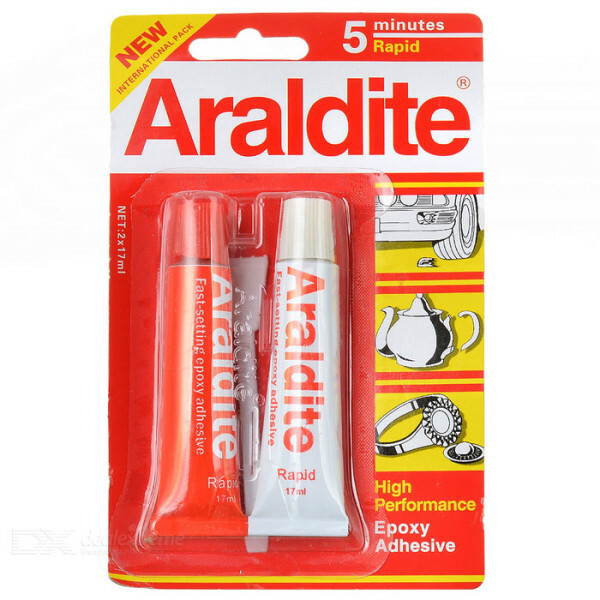
"Araldite" - a tribute to old traditions
Epoxy adhesive immediately found wide application in the home and in industry. And over the next ten years it has improved its physical characteristics, becoming one of the most popular adhesives.
Areas of operation
The use of adhesives of this type to date embraced the mass of different directions:
- Construction. Here, perhaps, the substance in question has received the greatest popularity.
Here are some variations of its use:
- Connect the components of concrete bridges. Imagine possible, every day you drive or walk across the river or the railway track on a design that preserves its integrity due to the adhesive;
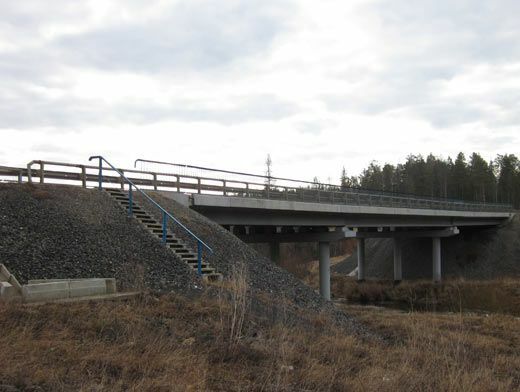
Fixing the fragments of concrete - a serious test for any fastening systems
- Creation of sandwich panels. Section consisting of two outer layers of metal or wood and the inner layer of insulation required for the construction of prefabricated houses. And it is considered a method of combining into one piece eliminates the need for nails or screws, violating the insulating properties of materials;
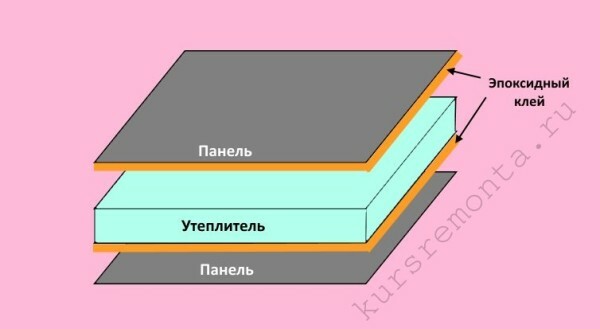
Scheme of use of the epoxy compound in the production of sandwich panels
- Embedding cracking in concrete structures. A much more reliable reuse of liquid concrete;
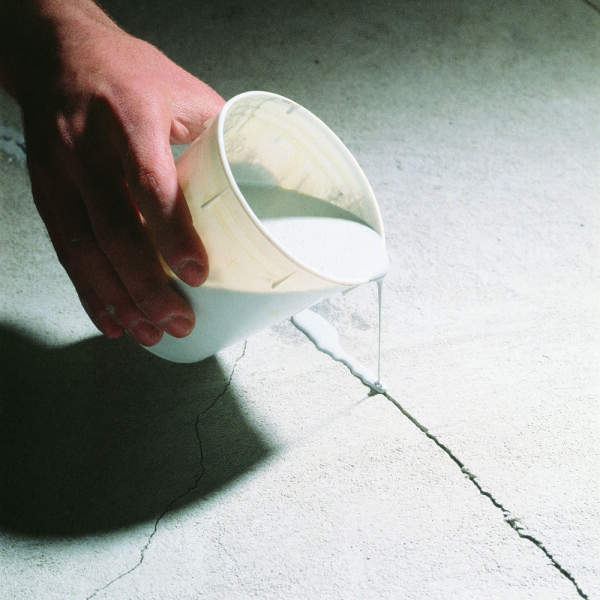
Filling cracks in concrete with epoxy adhesive
- installation of tiles. Tilers often used is "epoxy" in the course of their professional activity;

Laying tiles using epoxy composition ensures high reliability of its fixing
- Engineering. There are also many operations can not do without the use of epoxy compositions.
Among them are:
- Manufacturing of abrasive tools and industrial equipment;
- Fixing brake pads and plastic pieces to the iron bases;
- Restoration of the petrol tank of the vehicle body, shift box casing and brake housing;
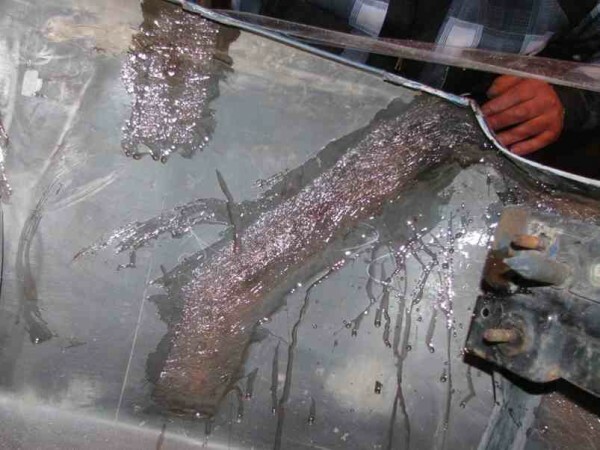
Repair work using "epoxy"
- Aviakonstruirovanie. Even here it is necessary epoxy adhesives, in particular for the manufacture of solar cells, creating kleesvarnogo type joints, mounting internal and external thermal protection;
- Shipbuilding. The proximity to the water and are not afraid of such a universal adhesive composition.
With his help:
- Going vessels made of fiberglass;
- Waterproof barriers creates maintaining a stable level of humidity;
- Processed housing parts of yachts and boats;
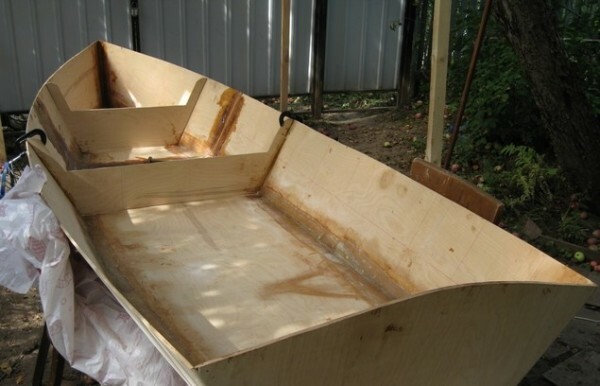
Boating frame processing epoxy adhesive
- life. The connection of different materials adhesive method as claimed in the domestic sphere, it is also not far behind in popularity of using "epoxy" from the listed areas. Most often this repair literally all that can crack, break off or break, sealing pipe joints, assembly of different models and souvenirs.
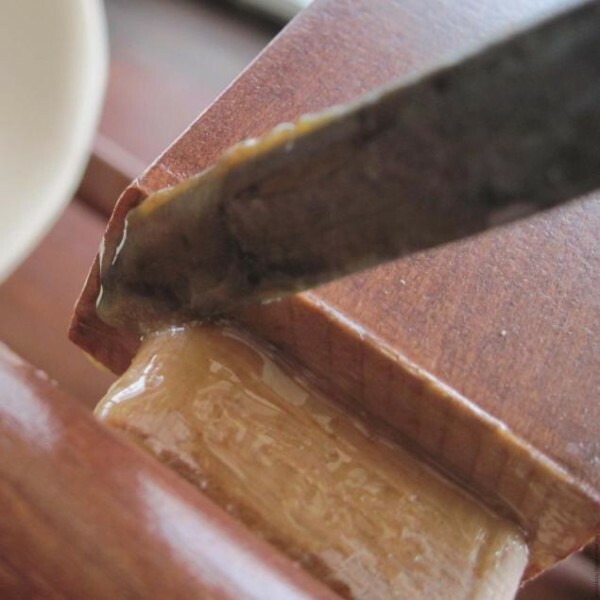
Restoration of furniture with his own hands with an epoxy solution
Structure
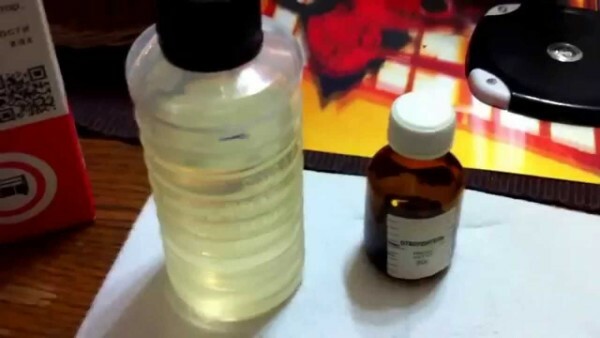
Resin and hardener - the main components of an epoxy adhesive
in addition to the resin itself directly epoxy adhesive composition comprises sufficiently capacious cocktail variety of ingredients:
hardeners
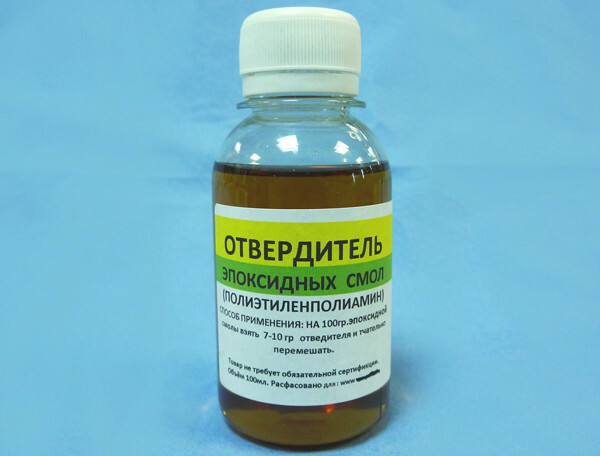
An example of a suitable curing agent
This is no less important component of the considered adhesive than the resin itself, as without it the solution hardens properly, Securely restricting the mating elements.
In this capacity, can be:
- Aminoamides;
- polyamines;
- rubbers;
- Silicone type resins;
- polyamides;
- Anhydrides of organic acids.
When adding a curing agent should be performed precisely its accompanying instruction. Any deviation from the assigned ratios lead to irreversible changes in the physical properties of the finished material.
solvents
The value of the solvent derives its name implies - a partial dissolving viscous substances, in this case resin.
In this case, the following options are suitable:
- Acetone;
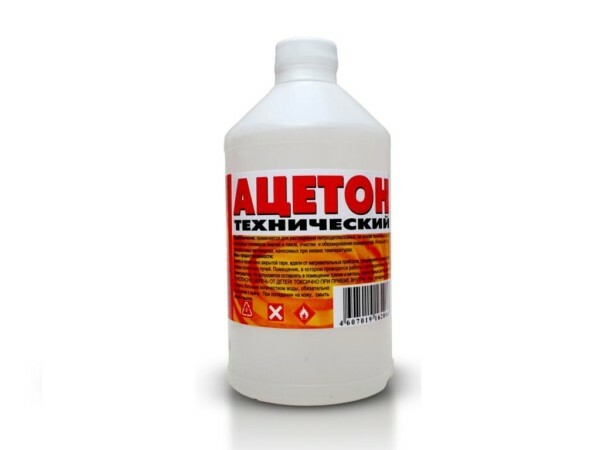
EXAMPLE acetone
- xylene;
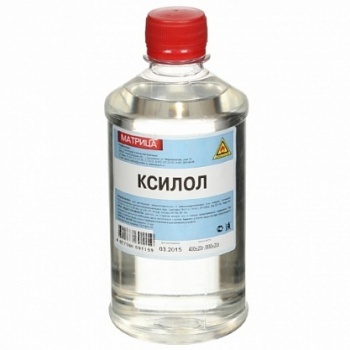
example xylene
- alcohols;
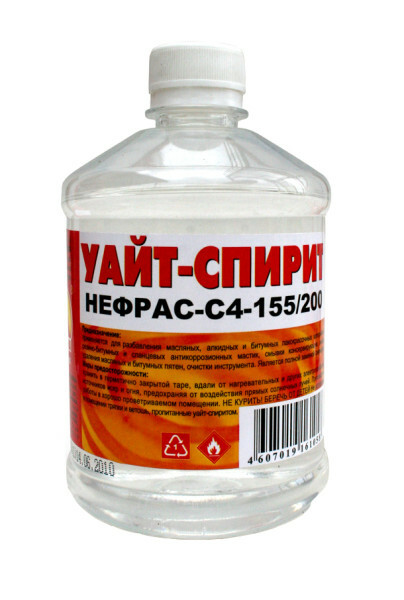
White spirit in a bottle
When the proportion of the solvent should range from 3 to 5 percent and the total amount of the adhesive solution.
fillers
The main objective of this component - imparting substance weight, structure and other physical properties. In addition, some fillers may play a part as stabilizers or hardeners.
This category forms part of epoxy adhesives include:
- Substance in powder form such as carbon, alumina, vanadium and beryllium, and silica;
- Fibers of glass or carbon;
- Fabrics made from synthetic fibers.
The percentage of fillers may be 50-300 percent of the total number of "epoxy".
plasticizers
This group represents the phosphoric esters and phthalic acids.
I recommend to use oligomeric and polymeric plasticizers, because thanks to them can be adjusted physico-mechanical properties of the epoxy adhesive, and improving the reliability guaranteed connectable elements.
Advantages and disadvantages
As a result, with the right mix of selected ingredients ready solution will have the following properties:
positive
- Ability to tolerate heating up to two hundred and fifty degrees Celsius. This value can vary in either direction depending on the filler used;
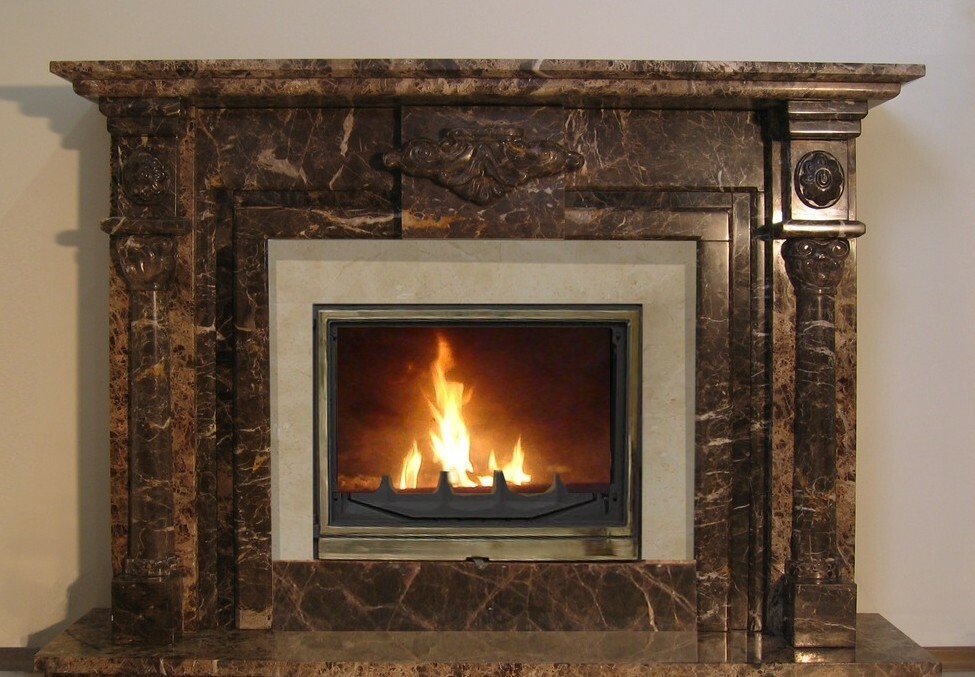
Using an epoxy adhesive may be safely perform finishing fireplaces
- Ability to tolerate regular frosts to twenty degrees Celsius below zero. The compound may also be the stand and transient drop in temperature to lower levels. So it is safe to use an epoxy adhesive for outdoor construction;
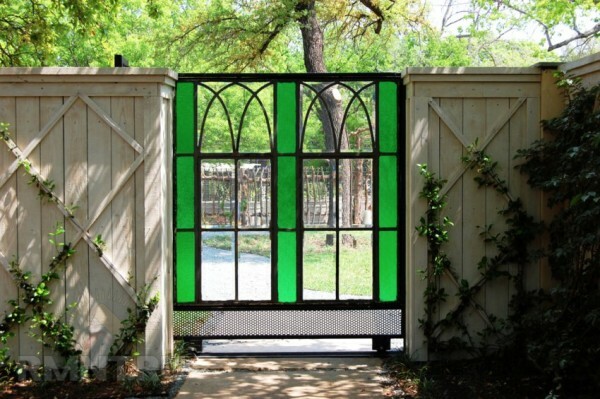
Inserts made of colored polycarbonate in the street gate planted to "epoxy"
- High stability of the adhesive joint to gasoline, oil and weatherproof;
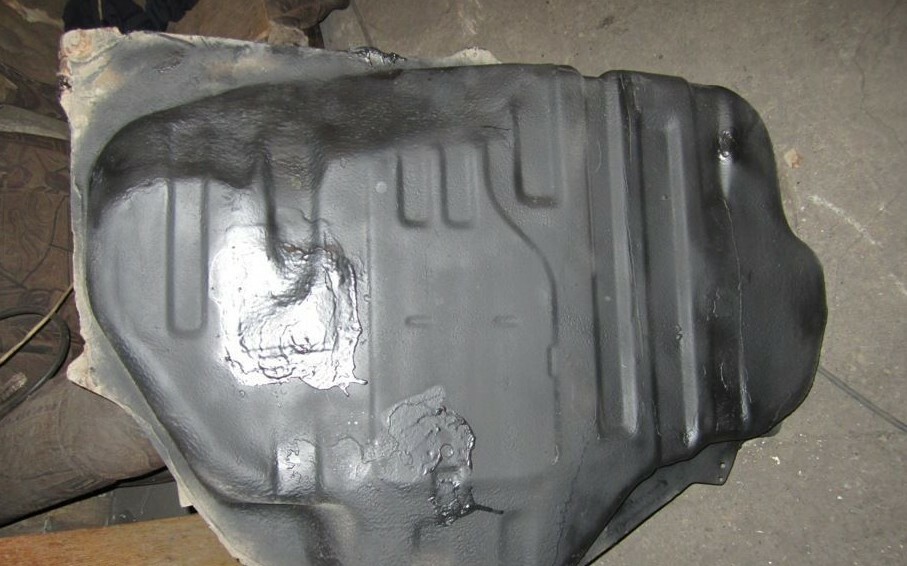
Fuel tank repair using an epoxy resin
- Chemical inertness to household chemicals and detergents;

Adhesive installation method the toilet is also possible with the help of formulation
- excellent flexibility. Some connected mobility fragments will not lead to the destruction of the adhesive joint or the appearance of cracks on it;
- watertight. Ensures complete sealing himself in contact with water does not lose its physical properties;
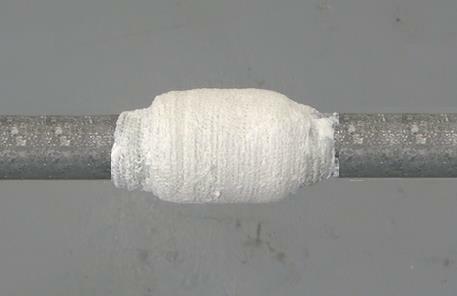
Eliminating a leak in the heating system by means of "epoxy" and gauze
- highest adhesion with the vast majority used in everyday life and building materials. Epoxy adhesive perfectly adheres to each other even cement and iron, not to mention the glass, plywood, wood, plastic and drywall;
- Short terms of solidification. Processed and stacked pieces almost instantly become one.
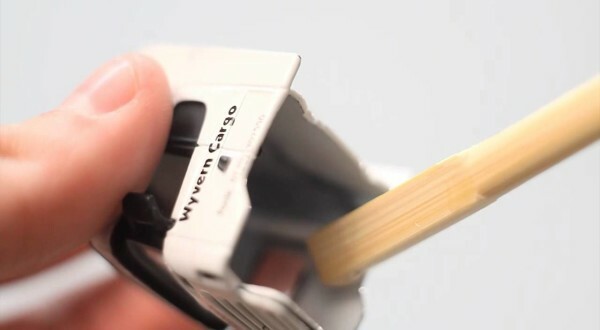
Bonding is very fast
Despite such a wide operating scope, in any case do not use epoxy compositions gluing things that come into contact with food, as if it enters the human body, they can cause serious poisoning.
negative
- No possibility of bonding PTFE, silicone and polyethylene. These materials are considered composition is destructive;
- High solidification rate. Above I noted this feature as an advantage, but in some situations it acts as a drawback. This happens when you need to make changes in the adhesive bond, and does not come out due to the fact that it has already grabbed;
- Difficulty in removing the glue from the exposed areas of the skin.
In the case of large volumes of the planned works with "epoxy" I recommend the use of gloves. This will eliminate the possibility of its contact with the skin of your hands.
existing varieties
Produced today Epoxy adhesives can be divided into groups according to the following criteria:
In composition,
- One-component. It is a transparent resin with a solvent enclosed in the tube. The use of such a solution is possible without any prior training and often aimed at the connection of small parts or elements of sanitary ware;
- Two-component. In most cases, "epoxy" can be found on sale in the form of two tubes, one of which itself comprises epoxy resin in pasty state, and the other is filled with a hardener in the form of liquids or powder.
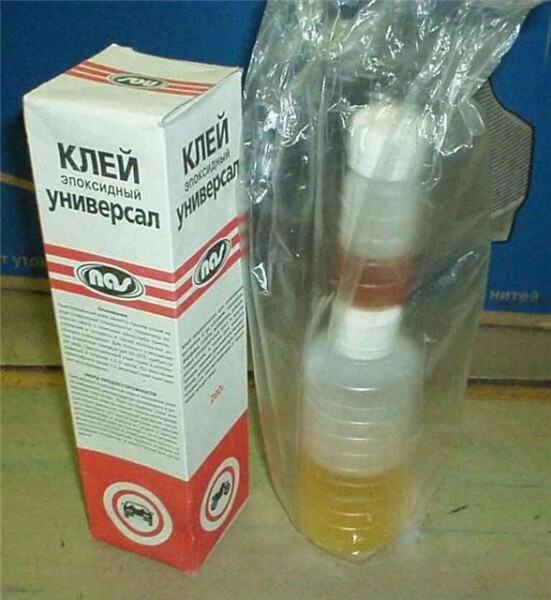
EXAMPLE bicomponent epoxy
consistency
- Liquid. The gel is poured from a bottle or squeezed out of a tube, saves time for preparatory work, and is much easier to apply;
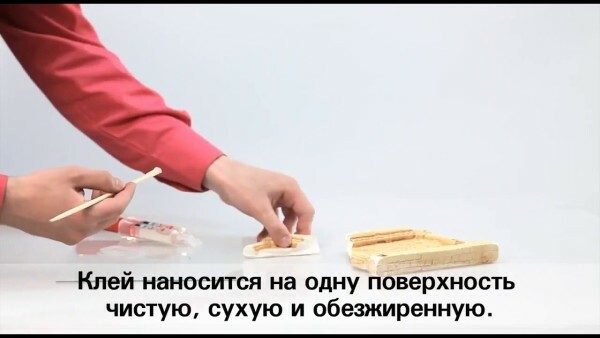
The application of liquid adhesive
- plastic mass. Externally very similar to a normal clay. In operation, a piece of the desired size is cut, softened and wetted with water, after which it is put in the right place and solidifies.
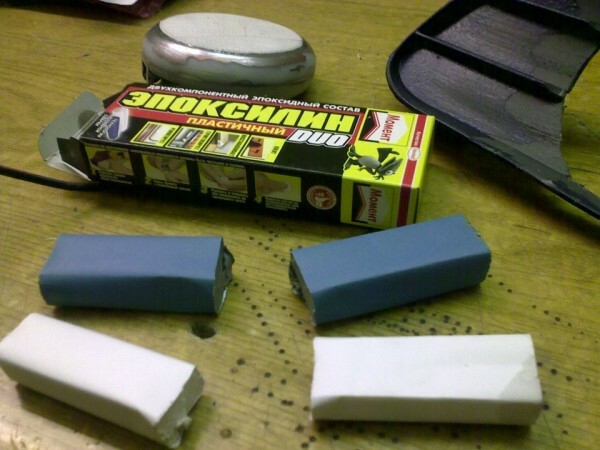
Externally it can be confused with a simple clay
Overview of the most popular representatives
What are the "epoxy" can be found in modern DIY stores?
Let's deal:
- "Moment". Easy to find in every hardware store thanks to a very wide distribution. Characteristics:
| Parameter | Description |
| Color | Transparent |
| pre-packing | tubes |
| Country of origin of the brand | Germany |
| volume | 12 g (2 tubes 6 g) |
| cost of | 180 rubles |

Sample mark "Moment"
- "Contact". Sold in the form of plastic masses and perfectly copes with the restoration of structures exposed to excessive moisture. Characteristics:
| Parameter | Description |
| volume | 70 ml |
| Withstand temperature range | -40 to +150 degrees Celsius |
| Setting time | 60-120 seconds |
| cost of | 220 rubles |
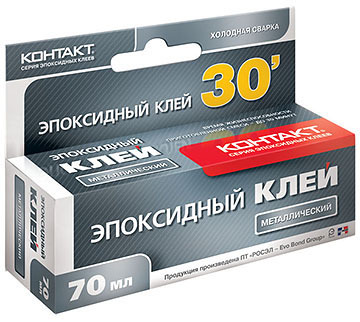
Sample mark "contact"
- "EAF". The price and quality of the structure, according to many artists can boast its optimal ratio. Characteristics:
| Parameter | Description |
| Color | Yellow |
| volume | 280 g |
| The period of solidification | Day |
| cost of | 170-200 rubles |
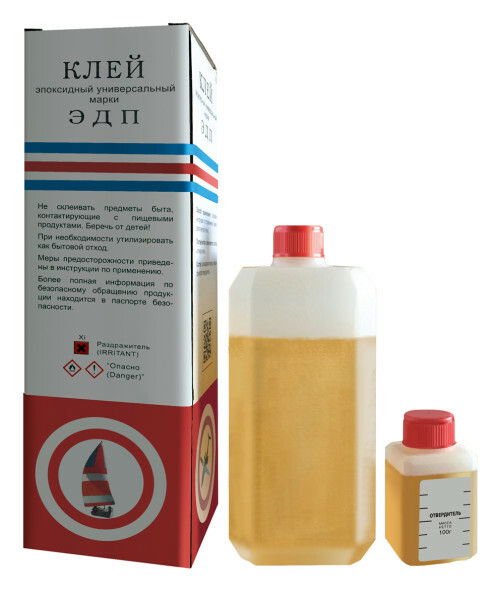
Sample mark "EHP"
conclusion
You know what the epoxy adhesive is applied in what areas and which types of case. In fact, it is a universal tool for quality bonding virtually all materials that you may encounter in everyday life or in the course of construction works.
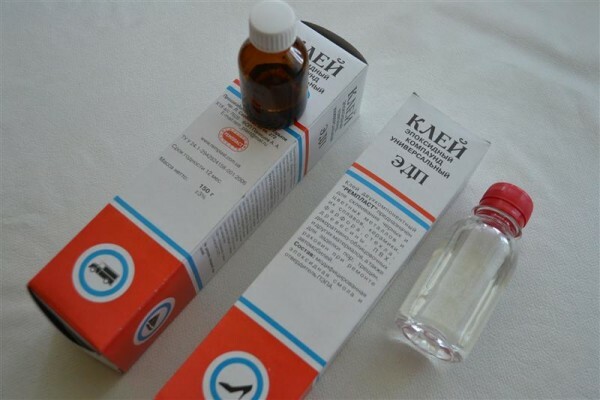
Loyal assistant DIY
Videos in this article contains a number of additional materials related to consideration of the topic. And in the comments, you can ask any concern for her your questions.
